On 20–23 March, SPbGASU hosted the IV National (All-Russian) scientific and practical conference with international participation “Reconstruction and restoration of architectural heritage”. Restorers from different regions of Russia and abroad, representatives of scientific communities gathered together to not only highlight the problems and ways of development of the industry in the professional circle, but also to adopt a resolution and subsequently discuss it at the state level.
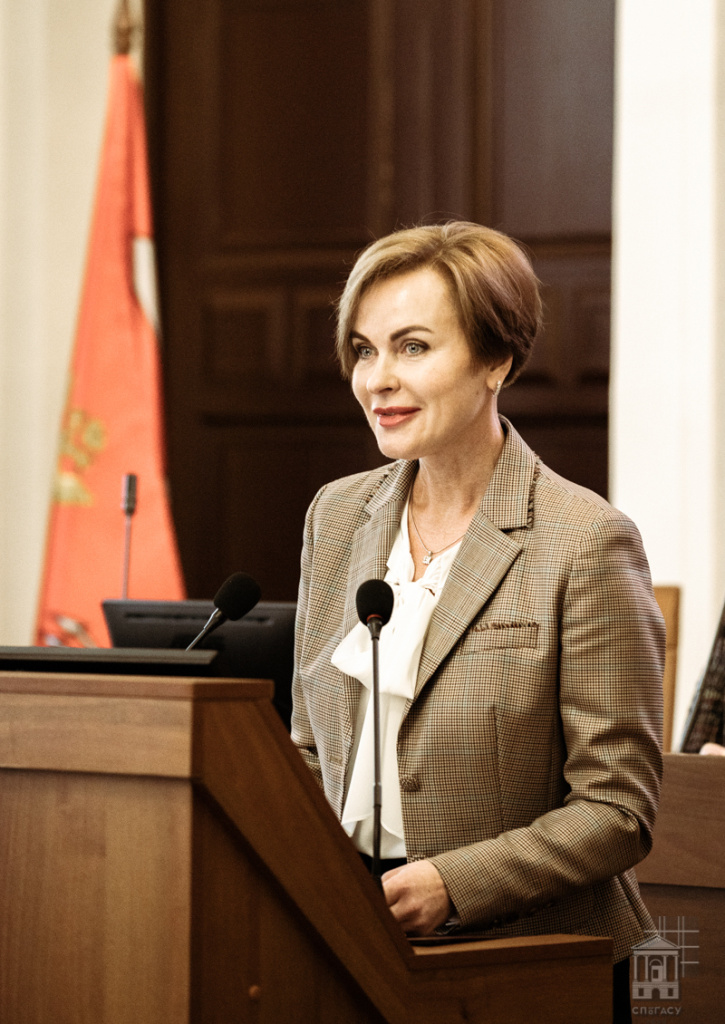 Svetlana Golovina is greeting the audience
Svetlana Golovina is greeting the audienceSPbGASU First Vice-Rector Svetlana Golovina welcomed the audience and emphasized that the conference brings together professionals and allows them to exchange experiences in the industry that has been significant at any time.
– The conference, which has become traditional, shows its effectiveness. I am sure that this time too it will become a broad social event and will boost new professional achievements,” noted Svetlana Golovina.
Professor at the SPbGASU Department of Urban Planning Sergey Sementsov emphasized that topical issues were raised at the conference every year, so it aroused great professional interest.
– This year we have supplemented the program with a section devoted to the problems of training restoration architects and restorers of applied professions. Historical heritage, on the one hand, and modern urban planning and architecture, on the other, are not consistent with each other, which creates difficulties in the process of preserving historical heritage. To preserve it, at least three million restorers of various specialties must work in our country every year, of which three hundred thousand are restoration architects. Currently, it is not possible to train so many specialists. The situation is complicated by the fact that only three professions – architect, urban planner, and restoration architect – have professional standards,” the specialist emphasized.
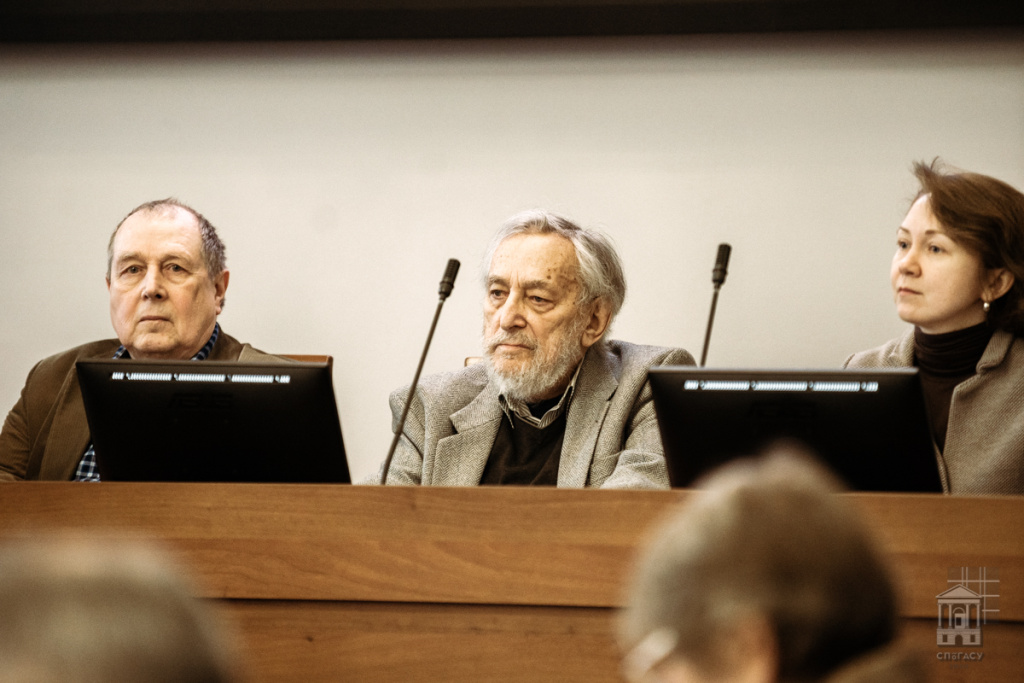 Sergey Sementsov, Mikhail Milchik and Ksenia Gubinskaya
Sergey Sementsov, Mikhail Milchik and Ksenia Gubinskaya
Art critic and member of the Council for the Preservation of Cultural Heritage under the Government of St Petersburg and the Ministry of Culture of the Russian Federation, Mikhail Milchik, agreed that the restoration is going through a deep crisis. He explained that restoration is a polyphonic industry, it is impossible to work in it without knowledge of architecture and its history, technology, archeology, therefore it requires versatile professionals. But the industry is experiencing a crisis for other reasons.
– The organization of restoration work in our country is far from perfect. Now the main criterion for competitions for restoration work is their cost. Restoration requires a substantial investment, however, it is the stated low price that influences the choice of contractor. In addition, the industry is limited by strict legislative frameworks. In this situation, such meetings give us the opportunity to jointly take several important steps towards resolving problems,” believes Mikhail Milchik.
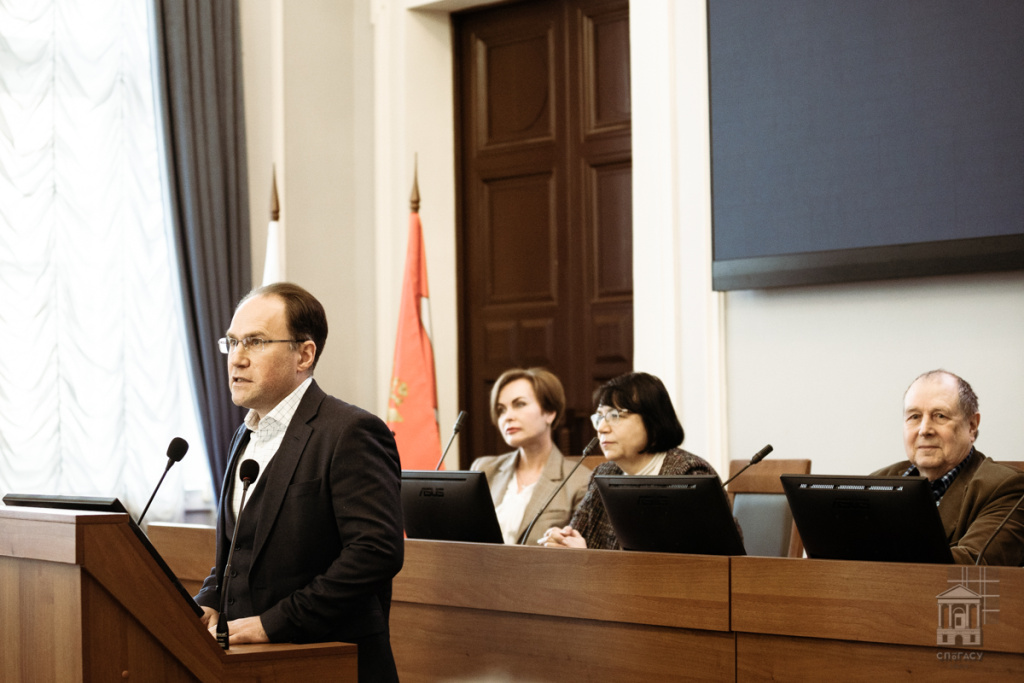 Aleksey Mikhailov speaking
Aleksey Mikhailov speakingRestoration is indeed in a zone of turbulence, and its crisis cannot be denied. This was confirmed by the first deputy chairman of the Committee on State Control, Use and Protection of Historical and Cultural Monuments of St Petersburg, Aleksey Mikhailov. However, he recalled that the crisis opens up opportunities to find new ways to develop the industry.
– Work on the creation and approval of professional standards continues, so there will be a certain transformation,” he concluded.
Deputy Chairman of the Committee for the Preservation of Cultural Heritage of the Leningrad Region, Ksenia Gubinskaya, noted the effective interaction of higher educational institutions and government bodies. The result of this interaction was more than 150 course projects and diploma works of students from specialized universities, including SPbGASU, dedicated to the restoration of historical and architectural monuments of the region and promising for practical implementation. Close interaction between authorities, universities, professional communities and commercial companies will allow us to develop solutions necessary for the development of the industry and overcoming its crisis.
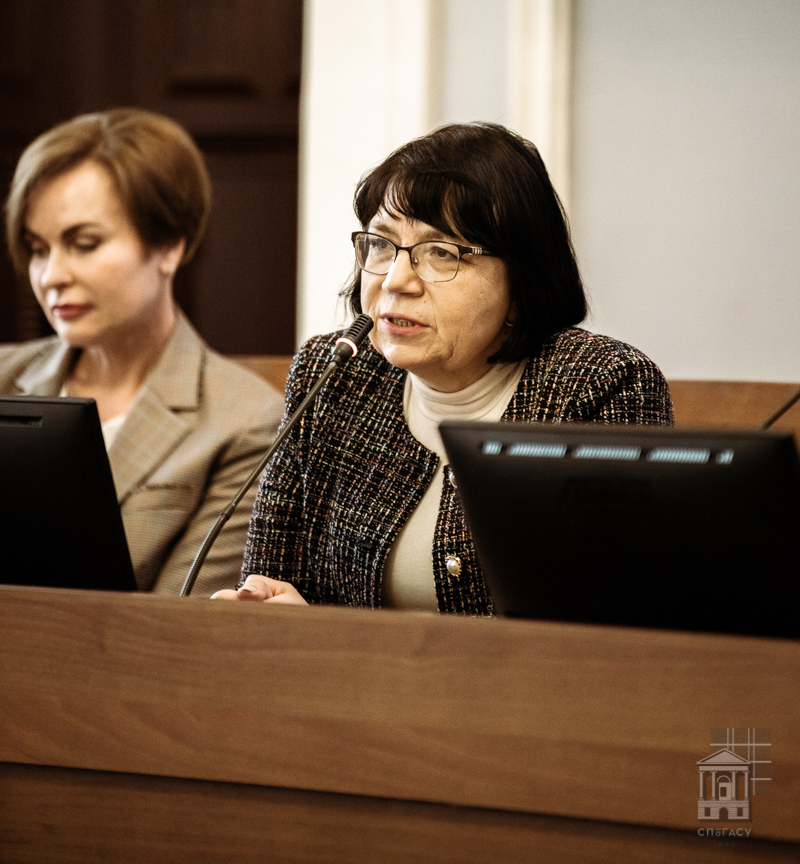 Ekaterina Vozniak
Ekaterina VozniakDean of the SPbGASU Faculty of Architecture, Head of the Department of Architectural and Urban-Planning Heritage Ekaterina Vozniak added that the department successfully operates model workshops, a mosaic restoration office, and the team is ready to cooperate with all of these structures in improving the educational process, as well as in solving pressing issues.
President of the Association of Restorers, acting director of the International Restoration Center Tatiana Chernyaeva gave examples of such effective cooperation. Public organizations have become a link between business, government, restorers and universities.
– The role of public organizations in the development of the industry is difficult to overestimate. We provide various types of support to specialists, guide them in the industry market, share necessary contacts, and enter public councils under government agencies, where we represent the interests of restorers in discussions of regulatory measures. In addition, we are developing international cooperation, thereby opening up new territories of opportunity,” noted Tatiana Chernyaeva.
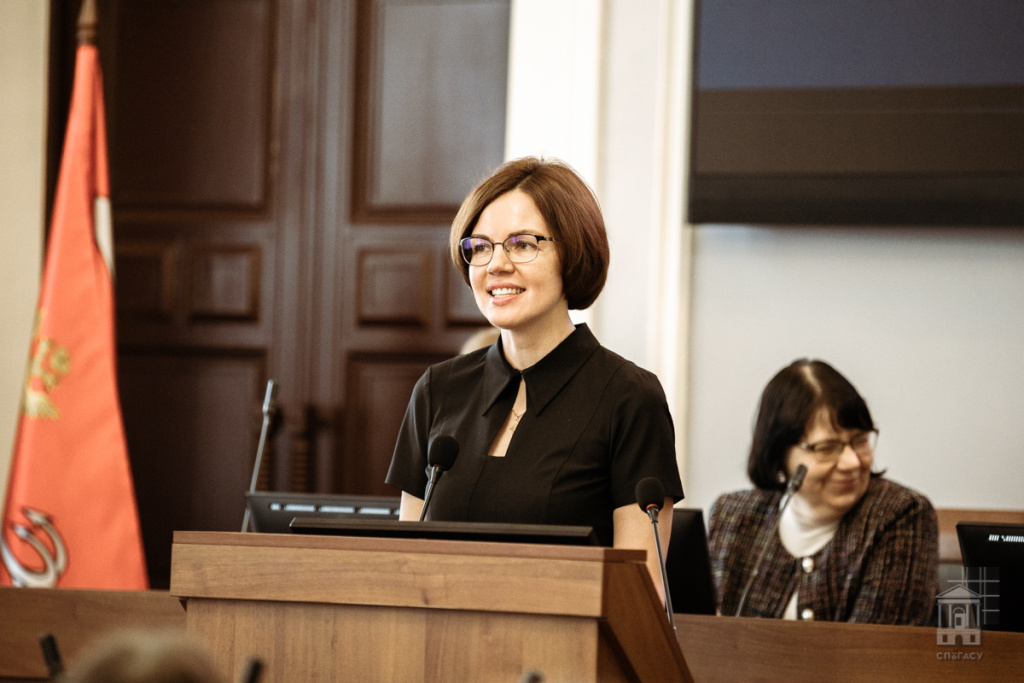 Tatiana Chernyaeva
Tatiana Chernyaeva
According to her, today it is important not only to train future restorers, but also to involve them in professional activities from the first year of study, develop mentoring and provide financial assistance to young specialists. The latest support measure is already being practiced in the Leningrad region.
– This is the only way we can prepare the necessary personnel, without whom a way out of the crisis is impossible. There are enough restoration artists in museum restoration, which is why there is an increase in production work and wages for specialists in this area. In architectural restoration everything is much more complicated. Since 2014, many restoration organizations have closed. And, if design workshops are still afloat, the number of production workshops has dropped to a critical minimum. We are ready to make our proposals for the development of the industry,” said Tatiana Chernyaeva.
Supporting all of the above, the main organizer of the conference, architect-restorer, associate professor at the SPbGASU Department of Architectural and Urban-Planning Heritage, Nadezhda Akulova, proposed to prepare a joint resolution based on the results of the conference, introducing into it all the most pressing problems with recommendations for solving them.
The conference participants discussed during thematic sections and round tables, what measures are being taken and planned to “restorate” the industry.
The conference proceedings will be published in a collection of materials.